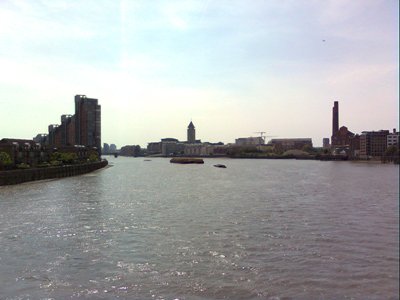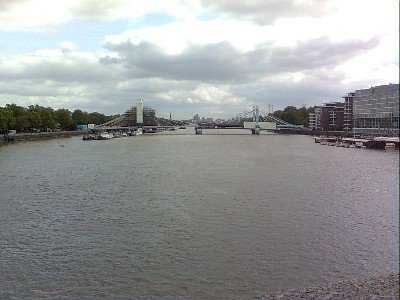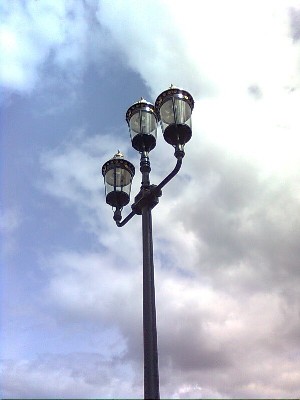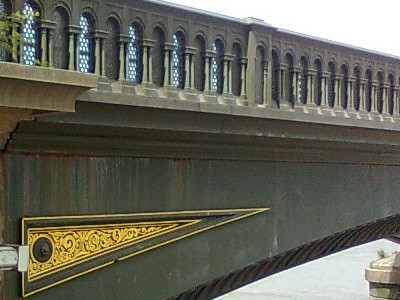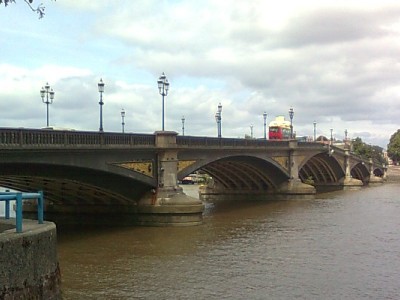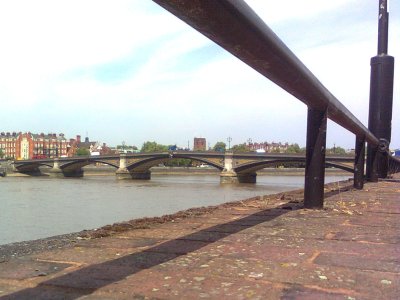
The present Battersea Bridge is the second to be built on this site. The first, opened in 1771, was a wooden bridge of 19 narrow spans. At first it was only for pedestrians, with carriages being able to use it the following year after the chalk and gravel surface had been added. The bridge was often rammed by passing boats and despite work carried out to widen some of the spans, it continued to be damaged regularly and in 1885, in readiness for a new bridge, it was demolished. The old bridge was considered by many artists to be very picturesque and was painted by many including Whistler who lived in nearby Chelsea for a number of years. He would make sketches at night from a boat and use the drawings as a basis from which to produce his paintings. The new bridge was opened in 1890, consisting of five segmental cast iron arches supported by granite piers on concrete foundations. Footpaths either side of the bridge are cantilevered out from the roadway. Ornamentation in the spandrels and Moorish style arches on the parapet enhance the bridge's appearance. The original lamps were removed during the second world war and replaced with replicas in the early 1990s when the bridge was refurbished. They were copied from the only remaining originals at each end of the bridge. At that time it was painted green and gold to bring it back to its former glory. |
